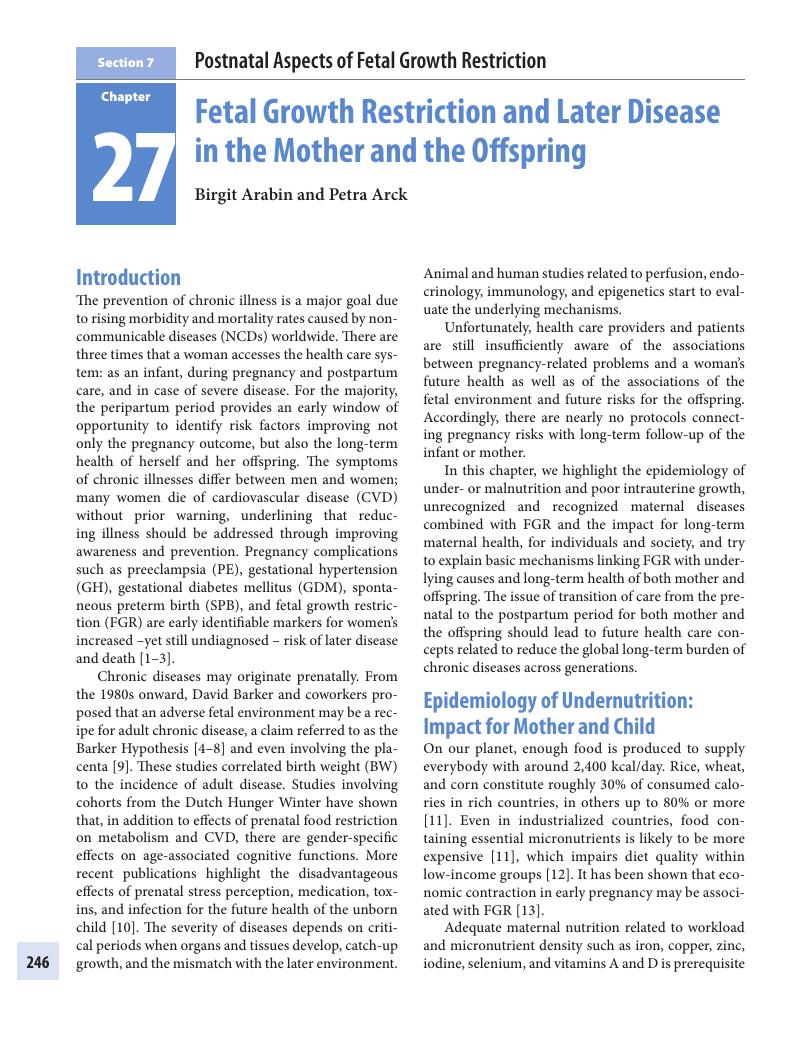Book contents
- Placental–Fetal Growth Restriction
- Placental–Fetal Growth Restriction
- Copyright page
- Contents
- Contributors
- Foreword
- Preface
- Glossary and Commonly Used Abbreviations
- Section 1 Basic Principles
- Section 2 Maternal Cardiovascular Characteristics and the Placenta
- Section 3 Screening for Placental–Fetal Growth Restriction
- Section 4 Prophylaxis and Treatment
- Section 5 Characteristics of Fetal Growth Restriction
- Section 6 Management of Fetal Growth Restriction
- Section 7 Postnatal Aspects of Fetal Growth Restriction
- Chapter 26 Fetal Growth Restriction and Neonatal Outcomes
- Chapter 27 Fetal Growth Restriction and Later Disease in the Mother and the Offspring
- Chapter 28 Fetal Growth Restriction: Recurrence Risks and Counseling
- Index
- References
Chapter 27 - Fetal Growth Restriction and Later Disease in the Mother and the Offspring
from Section 7 - Postnatal Aspects of Fetal Growth Restriction
Published online by Cambridge University Press: 23 July 2018
- Placental–Fetal Growth Restriction
- Placental–Fetal Growth Restriction
- Copyright page
- Contents
- Contributors
- Foreword
- Preface
- Glossary and Commonly Used Abbreviations
- Section 1 Basic Principles
- Section 2 Maternal Cardiovascular Characteristics and the Placenta
- Section 3 Screening for Placental–Fetal Growth Restriction
- Section 4 Prophylaxis and Treatment
- Section 5 Characteristics of Fetal Growth Restriction
- Section 6 Management of Fetal Growth Restriction
- Section 7 Postnatal Aspects of Fetal Growth Restriction
- Chapter 26 Fetal Growth Restriction and Neonatal Outcomes
- Chapter 27 Fetal Growth Restriction and Later Disease in the Mother and the Offspring
- Chapter 28 Fetal Growth Restriction: Recurrence Risks and Counseling
- Index
- References
Summary

- Type
- Chapter
- Information
- Placental-Fetal Growth Restriction , pp. 246 - 262Publisher: Cambridge University PressPrint publication year: 2018



